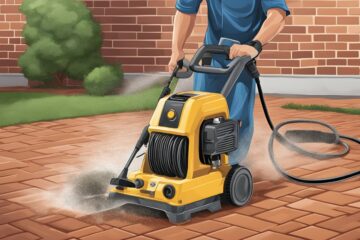There’s a lot to know if you’re considering a modular home. But don’t worry – we’ve got you covered. In this post, we’ll give you all the information you need to decide whether or not a modular home is right for you. We’ll cover topics like cost, construction, and design so that you can make an informed decision about your new home. Ready to learn more? Let’s get started!
What is a modular home?
A modular home is a unique way of building a house from the ground up. Instead of traditional “sticks and bricks” construction, modular homes are manufactured in sections in an off-site factory and then shipped to the building site. There they are all connected to create one residential structure. These homes can be designed as single-family dwellings or as large multi-family homes. The composition of modular assembly makes these homes easier and quicker to build compared to traditional construction, making them an ideal choice for those who need their new home quickly and cost-effectively.
Benefits of modular homes
Modular homes are becoming increasingly popular for people looking to purchase a new home. They come with several key benefits; most notably, they are cheaper and faster to build than traditional homes. The speed with which these homes can be constructed is beautiful, enabling buyers to move into their homes quicker. It also often has the additional benefit of reducing labour costs, as modular construction requires only semi-skilled workers. Another advantage they offer is the ability to customize them according to their buyer’s needs and preferences. Homeowners can choose different configurations, floor plans and decor options to personalise the house so that it perfectly fits them – making everything from the kitchen cabinets down to window sizes easily adjustable. This makes modular homes an excellent option for potential buyers wishing to save time and money while still finding a functional, well-designed house that meets their specifications.
How to buy a modular home
Buying a modular home is an exciting experience involving several steps to ensure the house meets your requirements. Working with a designer or architect ensures that you have detailed plans when it comes time to find a builder. The builder will then guide you through choosing your home’s materials, construction details, and finishes. After these decisions are made, the modules of your house will be constructed in a factory and transported to the building site for assembly on-site. It’s rewarding seeing your dream house come together one module at a time!
Tips for living in a modular home
Living in a modular home can be an exciting but challenging venture. To get the most out of your space, try decorating with multi-functional pieces like coffee tables or sideboards that double as seating, storage, and adjustable shelving. Don’t be afraid to go bold with colours and texture; a pop of solid colour on the walls may help to make the space feel even more significant. Utilize intelligent storage solutions like slim over-the-door shoe organizers or vacuum bags to help keep clutter at bay while making room for all your favourite items. Finally, don’t forget to accessorize; adding blankets and pillows in colours that coordinate with the walls will brighten up any room, while unique decorations such as photo galleries or plants can personalize your living space and make it feel more like home.
FAQs on modular homes
What are the four drawbacks of modular homes?
Modular homes have become popular for those looking for a quicker, more affordable home-building process. While modular homes boast several benefits, such as decreased construction times and saved costs, there are also some drawbacks to consider.
Firstly, modular homes typically lack customization options; since these homes are constructed off-site in predetermined sections, constraints often limit the overall design or layout modification.
Additionally, modular homes may miss out on certain municipal code requirements that follow the traditional building process.
Furthermore, unpainted materials used in modular homes may be subject to wear and tear more quickly than their painted counterparts.
Lastly, modular homeowners may have difficulty obtaining a mortgage through traditional channels due to difficulties with appraisal processes specific to modules. Those considering modular homes as an option should carefully weigh both the advantages and disadvantages before making any decisions.
Are modular homes warm?
Modular homes have revolutionized the way we think about home construction. They offer advantages such as time efficiency, cost-effectiveness, and personalized customization. One of the most important factors to consider is comfort – namely, if modular homes are warm enough for living in during cold winters. The answer is a resounding yes; modular homes provide several innovative solutions to staying comfortable through temperature regulation often lacking in traditional construction efforts. Modular homes include constructed walls with superior insulation capabilities, while options like geothermal heating create a more affordable way to maintain comfortable interior temperatures year-round. All this ensures that modular home occupants can enjoy their investment and feel cosy no matter what the forecast may look like outside their windows.
How long do modular homes usually last?
Modular homes have become a popular option for those looking to buy and build their own home. Not only do modular homes offer a quick and affordable way to create a new home, but they are also designed to be long-lasting. Generally, modular homes have an expected lifespan of around twenty years, though you can often get much more life out of them with proper maintenance. Depending on the materials from which the modular home is built, it may last up to fifty or even seventy-five years if adequately cared for. Beyond the length of time modular homes last, many homeowners find even more satisfaction in their energy efficiency and how customizable modular homes are in terms of colours, sizes, shapes, and styles.
Do you need planning permission for modular homes?
Modular homes are becoming increasingly popular for people looking for convenient and inexpensive housing options. With modular homes, it is essential to understand all the rules and regulations about planning permission in the area you wish to build. Depending on the modular home type, some regions require a building permit or planning permission before proceeding with any construction. To ensure that your modular home is up-to-code and will be accepted by all local regulations, consulting an experienced professional will help ensure that you meet all requirements without any unwelcome surprises later down the road.
What’s better, prefab or modular?
When it comes to modular and prefab homes, deciding which one is better is tough. Prefab homes are practically ready-made structure panels constructed offsite that can be quickly transported, assembled, and stitched together, providing affordability and speed of construction without compromising quality. On the other hand, modular homes are entire multi-roomed structures built offsite using modular components while preserving their flexibility during assembly. They can be easily tailored to each customer’s need through design modification. Ultimately, modular and prefab homes offer quick construction times with superior building materials while giving homeowners some control over the design process – making either an ideal choice for anyone looking to build a new home.
Conclusion
Modular homes are a great alternative to traditional stick-built homes and offer many benefits in terms of cost, time, and customization. Suppose you’re thinking about buying a modular home. In that case, the process is relatively straightforward: work with a designer or architect to create your plans, find a builder specialising in modular construction, choose your materials and finishes, and then sit back and watch as your home comes together on-site. Once you move in, there are a few things to keep in mind to make the most of your new space: decorate strategically to maximize the impact of each room, utilize storage solutions to keep clutter at bay and add personal touches throughout the house to make it feel like home.


